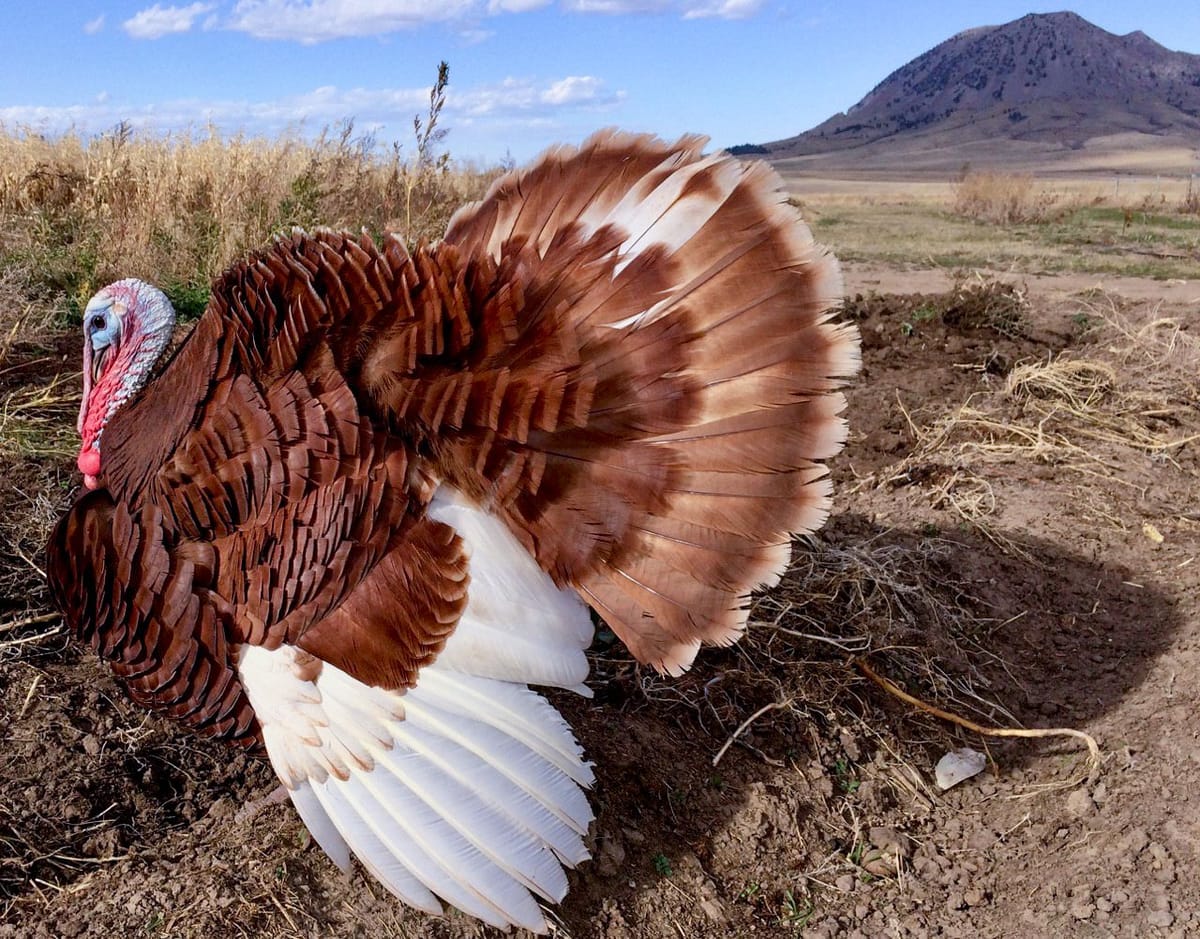
Bart Pfankuch and Mark Andersen/South Dakota News Watch
STURGIS, S.D. – During the COVID-19 pandemic, disruptions in the food production supply chain and workforce sometimes led to empty grocery shelves, pushing some consumers to turn to locally grown organic meats and produce.
That trend included heightened interest in so-called heritage turkeys, ancient breeds of the big birds that were common in the early days of the United States but which dropped from consumer consciousness as producers turned toward the plump, big-breasted turkeys that are grown en masse and will appear on millions of American dining tables this Thanksgiving.
While the pandemic spike has leveled off, a number of people in South Dakota remain highly interested in eschewing the cheaper, bigger white turkeys sold at chain grocery stores in favor of the smaller heritage birds grown and sold on a handful of Rushmore State organic farms.
“We saw a big surge during COVID, but there’s still an interest and a growing interest in our turkeys,” said Michelle Grosek, who runs Bear Butte Gardens organic farm near Sturgis with her husband, Rick. “Some people went back to old ways of eating, but a percentage has decided to stick with buying locally grown products.”
The Groseks raise Bourbon Red heritage turkeys, which not only make great table fare but are outstanding at keeping down grasshopper populations on the farm located west of state Highway 79 just north of Sturgis.
Many visitors to the farm across the highway from Bear Butte State Park seek a closer connection to how their food is raised. And they’re willing to pay more for a turkey that is locally grown in free-range conditions on farms without giant warehouses where birds are raised by the thousands and never leave until being trucked to processing plants.
“It’s a good market for us and growing all the time as there is more awareness of how your standard turkey or chicken is grown in a CAFO (concentrated animal feeding operation),” Michelle Grosek told News Watch.
In the run-up to Thanksgiving 2023, Grosek said she is butchering 10 of her own Bourbon Red turkeys and another 10 from another area farm. They range in finished weight from 10 to 17 pounds and are priced at $8 a pound, she said.
Grosek said she and her husband saw a jump in interest in their Bourbon Reds following a 2020 version of this News Watch story highlighting the increased interest in heritage turkeys. She not only heard from consumers interested in buying birds to eat but from other small producers looking for breeding stock to expand their flocks of Bourbon Beds.
“It was like a nice new community developed around that article, and I did not foresee that,” she said.
Ancient breeds nearly went extinct
Known collectively as “heritage turkeys,” many of the ancient breeds almost went extinct in the late 1990s. But those colorful, playful and spritely bird breeds are on the rebound as a small group of niche farmers in South Dakota and beyond are once again breeding, raising and selling heritage turkeys as part of a growing farm-to-table agricultural movement.
The story of how heritage turkey breeds almost disappeared, how a genetically modified bird that cannot reproduce on its own became the nation’s preferred table fare, and how a few farmers are fostering the re-emergence of the ancient breeds is a tale that sheds light on how modern agriculture has used science and selective breeding to increase production and profits. Yet it is also a story about how some farmers are taking on the task of preserving the ancient breeds to meet an increasing demand by some consumers to know more about what they eat and how it is raised.
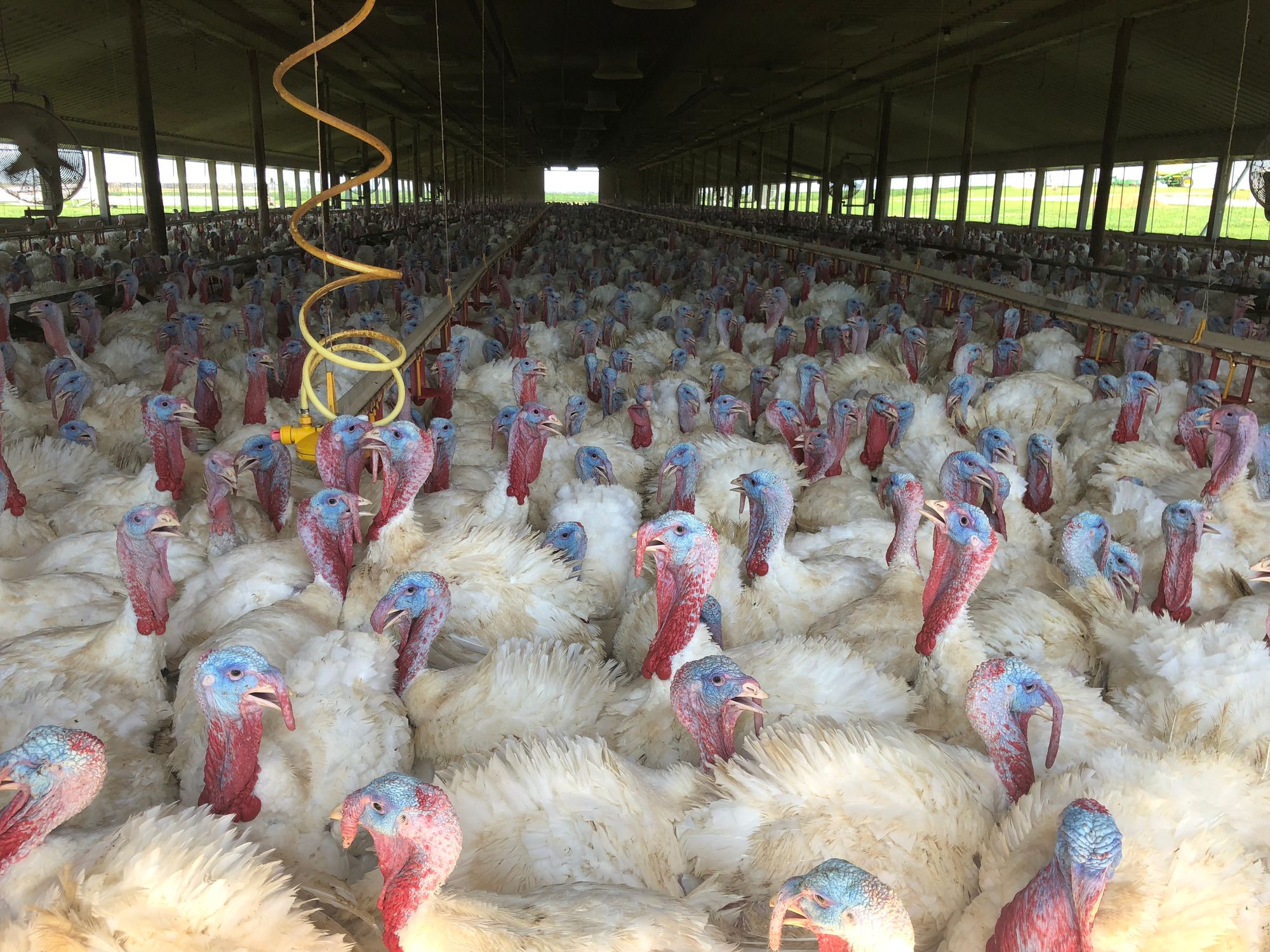
Breeding stock of heritage turkeys such as Auburn, Buff, Black, Bourbon Red, Narragansett, Royal Palm, Slate, Standard Bronze and Midget White totaled just 1,335 in 1997, according to a census taken by The Livestock Conservancy of Pittsboro, North Carolina.
Conservancy program manager Jeannette Beranger said in fall 2020 that the alarming decrease in birds sparked efforts to preserve heritage breed turkeys, whose total had climbed to 14,000 by 2016, the year the last census was taken. Specific breeds like Black turkeys remain rare; Chocolate turkeys have vanished.
The concern now is whether a new generation of farmers dedicated to preserving heritage breeds will step forward to replace those now retiring.
“Some of the old timers, the big-scale producers, have bowed out. The red flag is going up once again for (heritage) turkeys like in the ‘90s,” Beranger said. “We need more people breeding these birds.”
Only a handful of South Dakota producers raise heritage breed turkeys to sell. They do it out of a desire for preservation, to tap into a growing base of highly selective consumers, a preference for sustainable agriculture or because the heritage breeds are known for higher fat content and greater juiciness than the mass-produced birds.
The vast majority of the more than 200 million turkeys that Americans consume annually descend from a single breed — the Broad-Breasted White, a far different creature from turkeys of old.
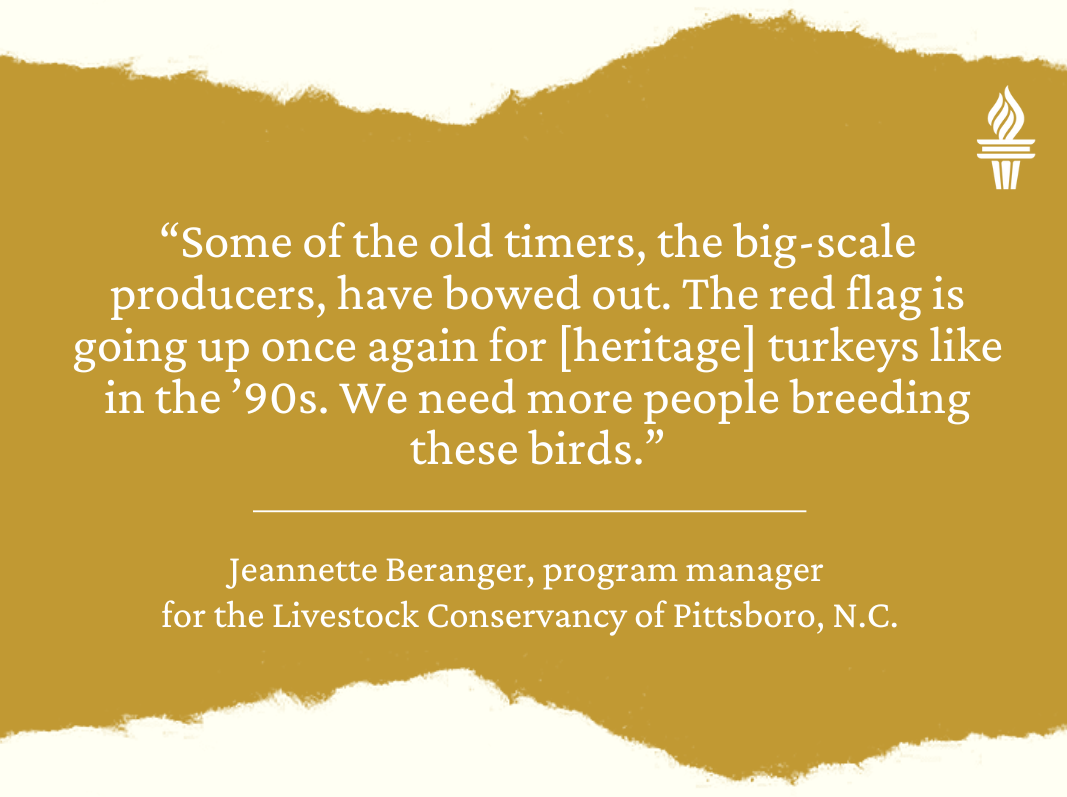
$300 million industry
Modern Broad Breasted White turkeys reach market weight in 14 to 18 weeks, compared with 28 weeks for other breeds. In heritage breeds, the extra weeks allow for more skeletal development and greater fat production, affecting juiciness and flavor.
Raised in large indoor pens, today’s commercial turkeys cannot defend themselves from predators, rear their young or reproduce without artificial insemination. They are too top-heavy to mate without assistance, with up to 70 percent of the bird’s weight concentrated in the oversized breast. They have weaker immune systems.
South Dakota is a significant producer of Broad Breasted Whites, with about 5 million turkeys raised annually almost exclusively in concentrated animal feeding operations runs by Hutterite colonies in East River. The Hutterite-owned Dakota Provisions turkey plant in Huron processes about 200 million pounds of turkeys a year and makes up a significant portion of the state’s $300 million annual poultry industry.
Promoters of heritage breeds worry that over-reliance on just one heavily modified breed creates vulnerability, said Beranger, who raises heritage breed chickens, which have characteristics similar to heritage turkeys. The problem extends beyond poultry to include other species.
Preserving old-time farm breeds as a safeguard against future diseases and other threats is the conservancy’s mission.
“The point of what we do is the conservation of rare genes that at some point could be very important for agriculture,” Beranger said. “We’ve found some interesting things going on when doing genetic studies.”
DNA variations governing the immune systems of heritage chickens, for example, do not appear in commercial birds, she said. Nobody knows what these variations do, but they cannot be manufactured and could be critical to sustaining .
“We don’t have a crystal ball,” Beranger said. “We don’t know what agriculture will need in the future.”
Among turkeys, different heritage breeds vary in characteristics, but they typically weigh about 10 percent more than wild turkeys. The Aztecs first domesticated turkeys about 2,000 years ago, initiating the selective breeding process. Most of today’s heritage breeds were developed by Europeans starting in the 16th century.
To be a true heritage breed, turkeys must mate naturally, grow slowly and have long lifespans. The benefits of heritage breeds, say promoters, are better flavor and nutrition. The high cost of production is the biggest challenge. Heritage breed turkeys typically cost consumers about $7 to $8 per pound, bringing the price of a 10-pound bird to $70 or more. Grocers, meanwhile, sometimes give away commercial turkeys or sell them at very cheap per-pound prices as a holiday grocery sales loss-leader.
Heritage breed promoters say a growing number of consumers will pay more for slower-growing, free-ranging birds.
“There are two definitions of cheap,” Beranger said. “You get what you pay for. If you want a turkey loaded with water that you find at the bottom of the pan after cooking, that’s fine.”

Organic farmers in Sturgis tap consumer demand
Raising heritage turkeys comes with a learning curve and increased per-bird costs compared to mass production. Farm expertise that was once common generations ago has given way to modern farm practices that don’t always translate to raising heritage turkeys.
Inside a pen at Bear Butte Gardens, a few Bourbon Red turkeys stretched their copper-colored necks to parry attacks from other young males in the unending battle for farmyard dominance.
The turkeys freely roamed about, displaying their feathers and providing comic relief on the farm, said Michelle Grosek.
“They’re so enamored with themselves,” she said.
The Groseks settled on Bourbon Reds partly because of an unscientific taste test but also because of the breed’s puppy-like personality. The birds follow humans around without being aggressive.
“They’re nice birds to be around,” Michelle Grosek said.
Raising heritage turkeys to sell publicly wasn’t the goal when she first ordered Bourbon Red poults — hatchlings — from a small Iowa breeder in 2012, but plans sometimes change on the growing Grosek farm.
Michelle Grosek started her working life in an office, switched to home medical transcribing when her two children were young, then finished a business degree before starting the nonprofit Sturgis Center for the Arts. At the arts center, booming sweet corn sales, which had begun as a community service, led her to recognize the untapped market for locally grown produce.
Bear Butte Gardens became her next passion project.
Organic certification, Michelle Grosek said, made it easier to sell the farm’s produce to local schools, so couple embarked on the strict accounting of imported manure that proves it is free of chemicals.
Rick Grosek realized they were exporting carbon in the form of hay only to reimport carbon that required documentation. Raising a breadth of farm animals could simplify carbon conversion, leading to the addition of lamb, beef, goats, chickens and a few Bourbon Reds, at first just for the couple’s Thanksgiving table.
The farm continues to evolve, now offering an organic farming apprenticeship. The education center and commercial kitchen will open soon. The Groseks have also added Narragansett turkeys, a hardy bird with a flighty personality.
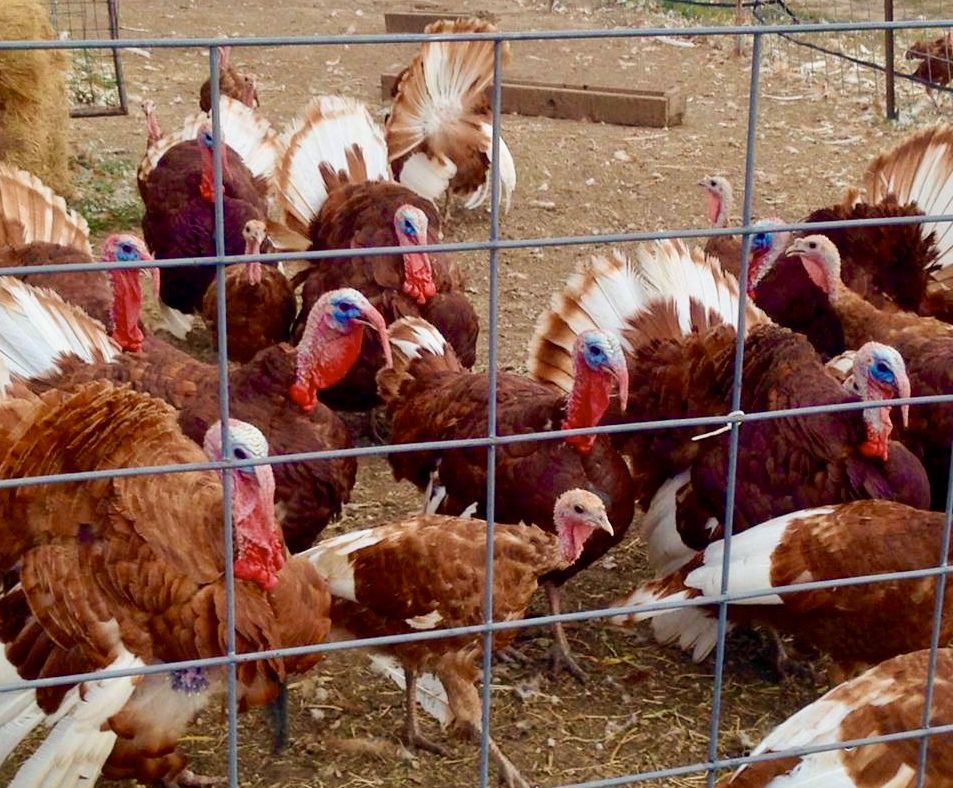
Chemicals replace turkeys as insect killers
Heritage breeds work well with old-school farming, where producers must manage manure for fertilizer, rotate crops and raise a variety of crops to balance the ecology. Historically, turkeys once filled the role now played by pesticides by consuming massive quantities of insects.
For the Groseks, the first year raising turkeys at Bear Butte Gardens came with sticker shock. Each poult costs $10, and expedited shipping added $25. Poults, meanwhile, are extremely susceptible to drafts until feathered. Some died in transit and more died soon afterward.
Eventually, heritage breeds become hardy, and some breeds can easily withstand harsh South Dakota winters, but those first weeks and months are critical.
To save money in 2013, Michelle Grosek kept a tom and a hen, then filled a borrowed incubator in her kitchen with 40 eggs, turning them three times daily. They all hatched.
“It was our most successful year ever,” she said.
The poults remained in a rubber tote in the kitchen, where she could adjust the lamp if they huddled beneath it for warmth or fled to the rim in search of shade. Eventually, the birds moved outside into heavy protective pens, which are open along the bottom so they can be pushed onto fresh dirt every few days. The pens are covered at night. Eventually, they are left outside to roam.
The turkeys always sell out, Michelle Grosek said. “We don’t go into anything there isn’t a market for,” she said.
But not all sales yield a profit.
At 28 weeks, most of the turkeys hit about 12 to 13 pounds and can generate income. Typically, about 15 birds get held over for another year. Those held over never get above 16 pounds, and there’s no profit on these birds because of extra feed costs.
Despite steady sales, Bear Butte Gardens didn’t offer turkeys for sale in 2019. Her breeding stock of a year earlier was disappointing, Michelle Grosek said. More eggs didn’t hatch, and the poults didn’t thrive as well as in years past. She reached out for new breeding stock but discovered late that her previous Iowa supplier had none to offer.
It drove home a lesson about the importance of breeding stock and maintaining connections. Michelle Grosek maintains a large database of contacts. In Meade County, she knows who has honey to sell and whose cucumbers have failed.
“Now we’re coming back into it (turkeys), and we’ll see how the hatching goes,” she said. “If we’re not happy, we’ll take a break until we get a good strong stock.”
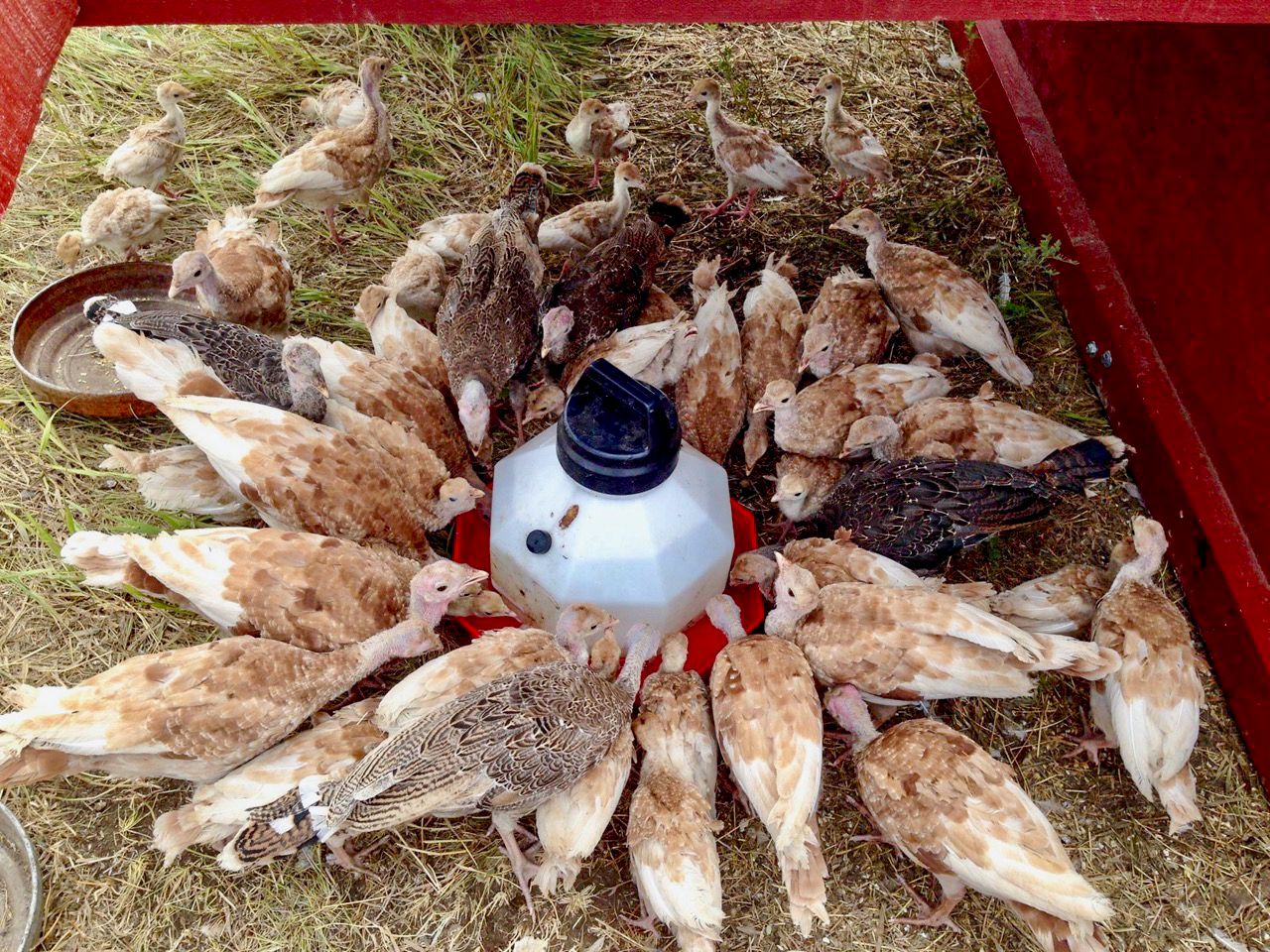
Aberdeen farmer preserves rare breeds
April Waldner thinks it would have been nice to see a dodo, the flightless bird that went extinct in 1681.
“Of course, that’s impossible,” said Waldner, owner of Royal Tom Turkeys of Mansfield, located south of Aberdeen.
Her musings led to research on other animals facing extinction, which led her to the Livestock Conservancy and its mission to preserve critically endangered or threatened breeds. She had raised ducks and chickens in the past, so she figured it couldn’t be that hard.
Her farm started as a traditional Angus and Hereford cow-calf operation, Walder said.
Further research led her to select the Royal Palm turkey breed, a largely white bird with bands of metallic black. Royal Palms can fly to escape predators, but they don’t fly away, she said.
“They like human company,” she said. “They’re never aggressive.”

Waldner’s turkey venture has required some trial and error.
She had to start again after a mink wriggled into the pen and killed all but one tom. She had designed her pen considering the threats of raccoons, skunks and larger predators.
“I didn’t think about a mink,” Waldner said. “I need the smallest little squares of wire everywhere.”
She started with heritage turkeys but has since expanded to include Heritage Shorthorn beef, Coon Coon pigs, Orpington ducks, Pilgrim geese and Meishan pigs, which she said “are so ugly they’re cute.”
Her plan is to raise two types of each species, such as two different types of ducks, with a count of 20 ducks total. Currently, her turkey poults stay in her kitchen until old enough to go outside.
Sales from her 120-head cattle operation stabilize her income, and she said people are willing to pay more for slow-growing breeds, although the market isn’t necessarily local to her region of South Dakota.
“If you want to sell and buy your animals, you have to travel,” Waldner said. She typically visits North Dakota and sites in the West River region of South Dakota.
As for why she bothers raising such labor-intensive turkeys and other animals, Waldner said it is part of her small role in creating a better world by protecting species that may be in danger.
“Kids won’t see as many species as we have now if we don’t keep them alive,” she said. “Once that breed is gone, they’re gone and gone forever.”
She hopes that more farmers will see the intrinsic value of raising heritage breeds.
“You have to ignore the negative people and keep going with mindset of ‘they’ll learn,’ or they won’t, and you’ll go on agreeing to disagree,” she said. “If humans don’t do something, nature is probably not going to help.”
